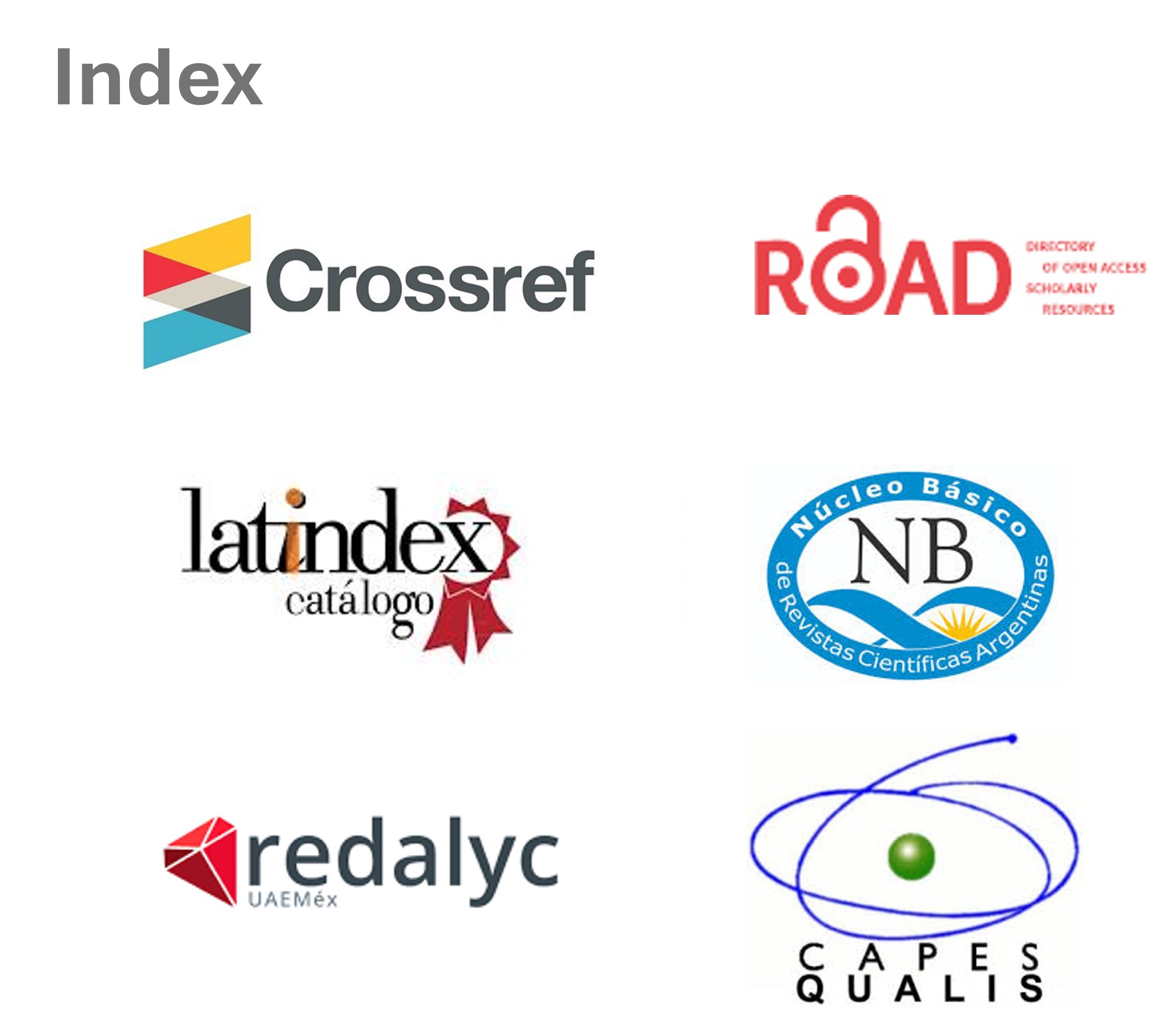Community-Based Innovation Ecosystems: Collaboration and Co-creation in socio-technical systems.
DOI:
https://doi.org/10.48160/18517072re55.137Keywords:
Collaboration, Co-creation, Collaborative ecology, Innovation ecosystems, Communal innovationAbstract
Collaboration at the conceptual and methodological level has been incorporated into an academic, work and professional narrative. In particular, in the literature of innovation studies, collaboration and co-creation have been of much interest at the managerial, network and experiential levels. However, there is still a gap in theoretical and analytical terms to understand this process. The aim of the present text is to provide a theoretical analysis of collaboration and in particular, to suggest the framework of community-based innovation ecosystems as a scenario of socio-technical co-production. In this way, this dynamic of interaction and interdependence between organizations is problematized, which is the basis for analyzing innovation systems and ecosystems through the relational perspective. A model of collaborative innovation ecosystem is presented and the five basic dimensions of this phenomenon are highlighted. Finally, final considerations are presented, focusing on its main elements around the theory of collaboration, relational processes of innovation and innovation ecosystems to conceive collaborative ecologies.
References
Adner, R. y Kapoor, R. (2010) “Value Creation in Innovation Ecosystems: How the Structure of Technological Interdependence Affects Firm Performance in New Technology Generations”, Strategic Management Journal, 31, pp. 306–333. doi: 10.1002/smj.
Akrich, M. et al. (2002), “The Key to Success in Innovation. Part I: the Art of Interessement”, International Journal of Innovation Management, 6, (2), pp. 187–206.,
Ansell, C. y Torfing, J. (eds.) (2014), Public Innovation through Collaboration and Design, New York, Routledge.
Arias, C. M. y Jaillier Castrillón, E. (2019), “La innovación social y redes de colaboración: la Red de Innovación Social desde la Educación Superior (RISES)”, Comunicación, (41), pp. 39–49.
Asheim, B. y Gertler, M. (2004), “The geography of Innovation: Regional Innovation System”, The Oxford Handbook of Innovation, Oxford, Oxford University Press, pp. 291–317.
Ashkenas, R. (2015), “There ’s a Difference Between cooperation and collaboration”, Harvard Business Review, abril, pp. 1–5.
Berdegué, J. (2005), Sistemas de innovación favorables a los pobres, International Fund for Agricultural Development, Washington.
Blomqvist, K. y Levy, J. (2006), “Collaboration capability - a focal concept in knowledge creation and collaborative innovation in networks.”, International Journal in Management concepts and philosophy, 2, (1), pp. 31–48.
Díaz Pérez, M., Casas, R. y Giráldez Reyes, R. (2019), “Análisis de las redes de colaboración en la innovación para el desarrollo”, Cooperativismo y Desarrollo, 7, (1), pp. 5–25.
Dodgson, M. (2014), “Collaboration and innovation management”, Dodgson, M., Gann, D., y Phillips, N. (eds.), The Oxford Handbook of Innovation Management, Oxford, Oxford University Press, pp. 462–481.
Durst, S. y Poutanen, P. (2013), “Success factors of innovation ecosystems - Initial insights from a literature review”, CO-CREATE 2013: The Boundary-Crossing Conference on Co- Design in Innovation, pp. 27–38.
Fagerberg, J. (2003), “Innovation: A guide to the literature”, en Fagerberg, J., Mowery, D., y Nelson, R. (eds.), Oxford Handbook of Innovation, Oxford, Oxford University Press, pp. 1–26.
Fulgencio, H. y Fever, H. Le (2016), “What is the social innovation system? A state-of-the-art review”, International Journal of Business Innovation and Research, 10, (2/3), p. 434. doi: 10.1504/ijbir.2016.074837.
Gomes, L. A. de V. et al. (2018), “Unpacking the innovation ecosystem construct: Evolution, gaps and trends”, Technological Forecasting and Social Change, 136, pp. 30–48. doi: 10.1016/j.techfore.2016.11.009.
Gray, B. (1989), Collaborating: Finding common ground for multiparty problems, San Francisco, Jossey-Bass.
Gray, B. (1996), “Cross-sectoral partners: Collaborative alliances among business, government and communities”, en Huxham, C. (ed.), Creating collaborative advantage, Thousand Oaks, CA, Sage, pp. 57–79.
Gray, B. (2000), “Assessing inter-organizational collaboration: Multiple conceptions and multiple methods.”, en Faulkner, D. y de Rond, M. (eds.), Cooperative strategy: Economic, business, and organizational issues, New York, Oxford University Press, pp. 243–260.
Hale, G. A. (1996), “Managing for Innovation”, R&D Innovator, 5, (10), pp. 5–8.
Huxham, C. (2005), Managing to collaborate: The theory and practice of collaborative advantage, London: Routledge.
Huxham, C. y Vangen, S. (2000), “Ambiguity, complexity, and dynamics in the membership of collaboration.”, Human Relations, 53, pp. 771–801.
Huxham, Chris (1996), “Collaboration and collaborative advantage”, en Huxham, C. (ed.), Creating collaborative advantage, Thousand Oaks, CA, SAGE, pp. 1–18.
Koslosky, M. A., Speroni, R. de M. y Gauthier, O. (2015), “Ecossistemas de inovação – Uma revisão sistemática da literatura”, Revista Espacios, 36, (03), pp. 1–17.
Kozar, O. (2010), “Towards better group work: Seeing the difference between cooperation and collaboration”, English Teaching Forum, 2, pp. 16–23. doi: 10.1007/978-0-387-88722-7.
Landry, R., Amara, N. y Lamari, M. (2002), “Does Social Capital Determine Innovation ? To What Extent ?”, Technological Forecasting and Social Change, 69, pp. 1–25.
Lundvall, B. (1988), “Innovation as an Interactive Process: from User-Producer interaction to the National Sistem of Innovation.”, en Dosi, G. y et al. (eds.), Technical change and Economic Theory, Londres, Pinter, pp. 349–369.
Lundvall, B. (1992), National Innovation System: Towards a Theory of Innovation and Interactive Learning, Londres, Pinter.
Martin, R. y Simmie, J. (2008), “Path dependence and local innovation systems in city-regions”, Innovation: Management, Policy and Practice, 10, (2–3), pp. 183–196. doi: 10.5172/impp.453.10.2-3.183.
Martinez, M. et al. (2017), “La metáfora biológica como metodología de aprendizaje organizacional. El caso de los ecosistemas de innovación”, Espacios, 38, (43), p. 18.
Merriam-webster (2019a), “Definition of collaborate”. Disponible en: https://www.merriam-webster.com/dictionary/collaboration. Consultado: el 19 de septiembre de 2018.
Merriam-webster (2019b,) “Definition of cooperation”. Disponible en: https://www.merriam-webster.com/dictionary/cooperation. Consultado: el 19 de septiembre de 2019.
Monge, P., Heiss, B. M. y Margolin, D. B. (2008), “Communication network evolution in organizational communities”, Communication Theory, 18, (4), pp. 449–477.
Montoya, Alexandra. y Montoya, Alonso. (eds.) (2012), Metáforas biológicas aplicadas a las organizaciones, Bogotá D.C. – Colombia, Universidad Nacional de Colombia.
Montoya, I., Montoya, L. y Muñoz, G. (2012), “Aplicación metafórica de elementos de la sociobiología en la formación comunitaria de la identidad territorial”, en Montoya, L. y Montoya, I. (eds.), Metáforas biológicas aplicadas a las organizaciones, Bogotá D.C. – Colombia, Universidad Nacional de Colombia, p. 252.
Montoya, L., Aranda, Y. y Montoya, I. (2012), “Aplicación de un modelo coevolutivo a la construcción de redes para el desarrollo rural territorial”, en Montoya, L. y Montoya, I. (eds.), Metáforas biológicas aplicadas a las organizaciones, Bogotá D.C. – Colombia, Universidad Nacional de Colombia, pp. 253–275.
Moore, J. (1996), The Death of Competition: Leadership and strategy in the age of business ecosystems, New York, Harper Business.
Muscio, A. (2006), “From regional innovation systems to local innovation systems: Evidence from Italian industrial districts”, European Planning Studies, 14, (6), pp. 773–789. doi: 10.1080/09654310500496073.
Nelson, R. (1993), National Innovation System: A comparative study, Oxford, Oxford University Press.
Nissen, H. A., Evald, M. R. y Clarke, A. H. (2014), “Knowledge sharing in heterogeneous teams through collaboration and cooperation: Exemplified through Public–Private-Innovation partnerships”, Industrial Marketing Management, 43, (3), pp. 473–482. doi: https://doi.org/10.1016/j.indmarman.2013.12.015.
Oh, D. S. et al. (2016), “Innovation ecosystems: A critical examination”, Technovation, 54, pp. 1–6. doi: 10.1016/j.technovation.2016.02.004.
Pater, M. (2009), “Co-creation’s 5 guiding principles”, Fronteer Strategy. Disponible en: http://www.fronteerstrategy.com/uploads/files/whitepaper/FS_Whitepaper1-Co-creation_5_Guiding_Principles-April_2009.pdf.
Porter, M. (1990), “The competitive advantage of the nations”, Harvard Business Review, 68, pp. 73–93.
Ramaswamy, V. y Ozcan, K. (2014), The Co-Creation Paradigm, Stanford, California, Stanford University Press.
Ramírez, M. S. y García-Peñalvo, F. J. (2018), “Co-creation and open innovation: Systematic literature review”, Comunicar, 26, (54), pp. 9–18. doi: 10.3916/C54-2018-01.
Reina-Rozo, J. D. (2019), “Communal Innovation: Collective Creation Towards Wellbeing”, SSRN Electronic Journal. doi: 10.2139/ssrn.3639564.
Reina-Rozo, J. D. (2021), “Community-Based Innovation Ecosystems in Peace-building and Resilience Contexts”, en Orozco, L. et al. (eds.), Governance of Science, Technology and Innovation in Latin America, Volume 1: Cases in Social Inclusion and Sustainable Development, New York: Palgrave Macmillan, p. (In press).
Roschelle, J. y Teasley, S. (1995), “The construction of shared knowledge in collaborative problem solving.”, en O’Malley, C. E. (ed.), Computer supported collaborative learning, Heidelberg, Springer-Verlag, pp. 69–97.
Salcedo, C., Vega, M. de J. y Reina-Rozo, J. D. (2021), “Redes de colaboración y formación para el fomento de la ingeniería comprometida: Reflexiones hacia futuros posibles”, International Journal of Engineering, Social Justice, and Peace, 8, (1), pp. 111–132. doi: 10.24908/ijesjp.v8i1.14285.
Shaw, D. R. y Allen, T. (2018), “Studying innovation ecosystems using ecology theory”, Technological Forecasting and Social Change, 136, pp. 88–102. doi: 10.1016/j.techfore.2016.11.030.
Smorodinskaya, N. et al. (2017), “Innovation Ecosystems vs. Innovation Systems in Terms of Collaboration and Co-creation of Value”, 50th Hawaii International Conference on System Sciences, pp. 5245–5254. doi: 10.24251/HICSS.2017.636.
Stenius, L. (2015), The Co-Creation Paradigm: A Critical Review, Copenhagen, Copenhagen Business School.
Thomas, H., Becerra, L. y Picabea, J. (2014), “Colaboración, producción e innovación: Una propuesta analítica y normativa para el desarrollo inclusivo”, Astrolabio, 12, pp. 4–42.
Thomson, A. M. y Perry, J. L. (2006), “Collaboration processes: Inside the black box”, Public Administration Review, 66, pp. 20–32. doi: 10.1111/j.1540-6210.2006.00663.x.
Thomson, A. M., Perry, J. L. y Miller, T. K. (2009), “Conceptualizing and measuring collaboration”, Journal of Public Administration Research and Theory, 19, (1), pp. 23–56. doi: 10.1093/jopart/mum036.
Thomson, A. M., Perry, J. y Miller, T. (2015), “Linking Collaboration Processes and Outcomes Foundations for Advancing Empirical Theory”, en Blomgren, Li. y O’Learly, R. (eds.), Big Ideas in Collaborative Public Management, Londres, Routledge. doi: 10.4324/9781315706146.
Tsujimoto, M. et al. (2018), “A review of the ecosystem concept — Towards coherent ecosystem design”, Technological Forecasting and Social Change, 136, pp. 49–58. doi: 10.1016/j.techfore.2017.06.032.
Van de Ven, A. et al. (1999), The innovation journey, New York, Oxford University Press.
Voorberg, W. et al. (2015), “A Systematic Review of Co-Creation and Co- Production: Embarking on the social innovation journey”, Public Management Review, 17, (9), pp. 1333–1357. doi: 10.1002/dir.20015.
Voorberg, W. H., Bekkers, V. J. J. M. y Tummers, L. G. (2015), “A Systematic Review of Co-Creation and Co-Production: Embarking on the social innovation journey”, Public Management Review, 17, (9), pp. 1333–1357. doi: 10.1080/14719037.2014.930505.
Wood, D. y Gray, B. (1991), “Toward a comprehensive theory of Collaboration”, Journal of applied behavioral science, 27, (2), pp. 139–162.
Wulf, W. (2007) “Changes in Innovation Ecology”, Science, 316, (5829), p. 1253. doi: 10.1126/science.1145598.
Wulf, W. (2008) “The Innovation Ecology”, en Schweitzer, G. y Sobouti, Y. (eds.) Science as a Gateway to Understanding: International Workshop Proceedings, Tehran, Iran, Washington DC, National Academies Press, pp. 15–23.
Zazo Rodríguez, Á., Ardines González, S. y Castro Martínez, E. (2015), “Collaborative networks of research units of the University of Panama: research, development and innovation”, Redes. Revista hispana para el análisis de redes sociales, 26, (2), p. 84. doi: 10.5565/rev/redes.539.
Published
How to Cite
Issue
Section
License
Copyright (c) 2024 Redes. Journal of Social Studies of Science and TechnologyThe documents published here are governed by the licensing criteria
Creative Commons Argentina.Atribución - No Comercial - Sin Obra Derivada 2.5 https://creativecommons.org/licenses/by-nc-nd/2.5/ar/













